Since Bitcoin’s inception in 2009, several other cryptocurrencies have cropped up, effectively accumulating into the thousands. However, no cryptocurrency has been able to topple this first market mover in market capitalization. Similarly, Ethereum has managed to secure its spot as the second-largest cryptocurrency by the same measure. This can be attributed to the fact that it was the first smart contract that enabled blockchain to launch, which gave it utility as a host network for a wide variety of decentralized apps.
About Bitcoin and Ethereum
As aforementioned, BTC and ETH are the two most popular cryptocurrencies globally. Bitcoin was launched to provide an alternative to fiat money as a store of value. It solved the major issues of fiat currency, among them its tendency to be controlled by its issuing country’s government and its inflationary nature. By having a fixed supply, Bitcoin is by design a deflationary asset that will only rise in value as its demand outweighs its supply. It is also hosted on a blockchain, which makes it decentralized and under no one entity’s control.
Ethereum, on the other hand, is a blockchain built around smart contracts. This means that developers can build decentralized applications on this chain, as well as various decentralized finance (DeFi) platforms. This enables its users to access loans, provide collateral if they intend to borrow crypto loans, and earn interest from lending out crypto. It also enables artists to monetize their content by minting it into NFTs.
There is no doubt about the profit potential contained within these two top cryptocurrencies. The deflationary nature of BTC means its price is only expected to go up as the years roll by. For ETH, its numerous use cases are poised to keep it rallying over the coming years. However, how can one profit from the short-term price fluctuations of these two coins? Let’s look at a few viable approaches.
The MACD method
The MACD is a popular indicator that utilizes a combination of a line graph and a histogram to highlight the direction and momentum behind price movements. The line graph features a signal line and a MACD line. Whenever the latter is above the signal line, it points to a market rally. Whenever the MACD line goes below the signal, it signifies a market in a downtrend. The histogram also fluctuates between the negative and positive zones to display momentum behind bearish and bullish moves.
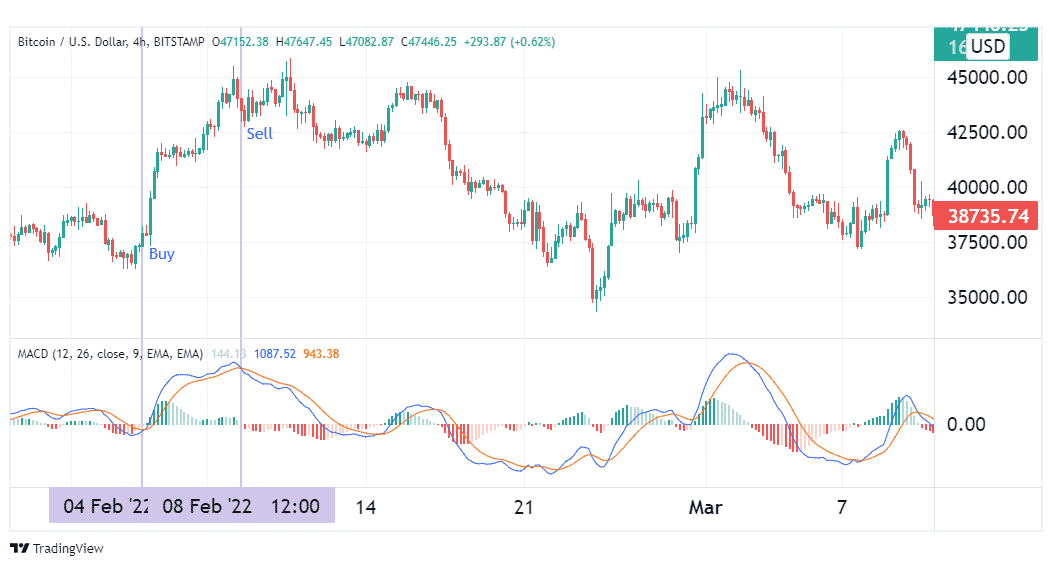
In the illustration above, we got a buy signal when the blue MACD line crossed above the red signal line on 4th February. The exit came on 8th February, when the bearish cross happened, and the histogram turned to the negative zone.
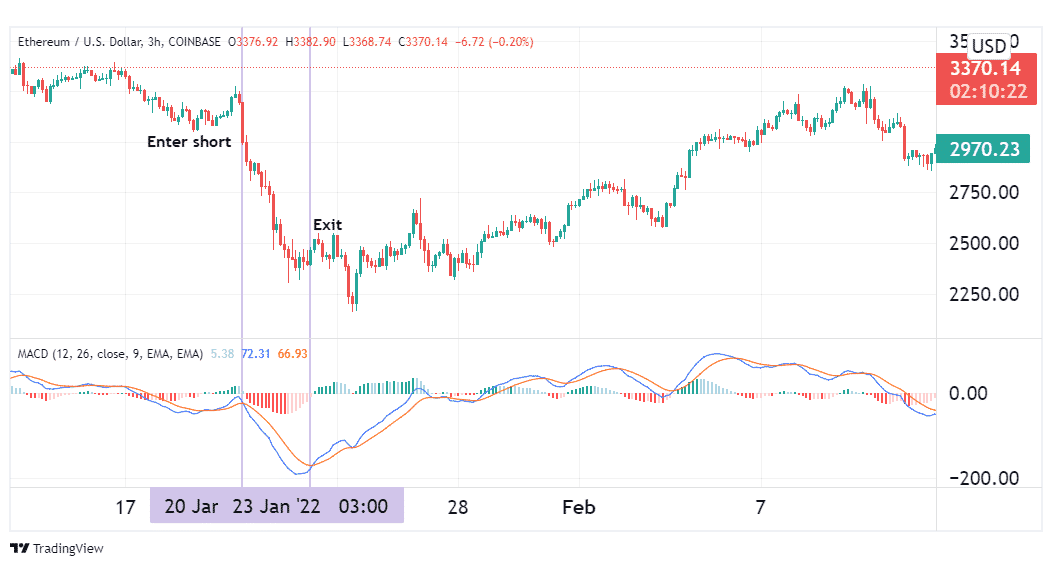
In a similar manner, the image above shows the MACD yielding a short signal on Ethereum’s price chart.
The Bollinger Bands method
Bollinger Bands is a popular indicator used in a variety of financial markets. It consists of a Simple Moving Average that provides its middle band. It also has upper and lower bands that are separated from this MA line by a standard deviation measure (the default is 2 standard deviations, but this can be duly adjusted).
Whenever prices cross above the MA line to adhere to the upper band, the coin is thought of as being bullish. Conversely, when its price drops below the middle band and adheres to the lower, it points to a market in a downtrend. Therefore, these crosses above and below the middle band are used as trade entries and exits.
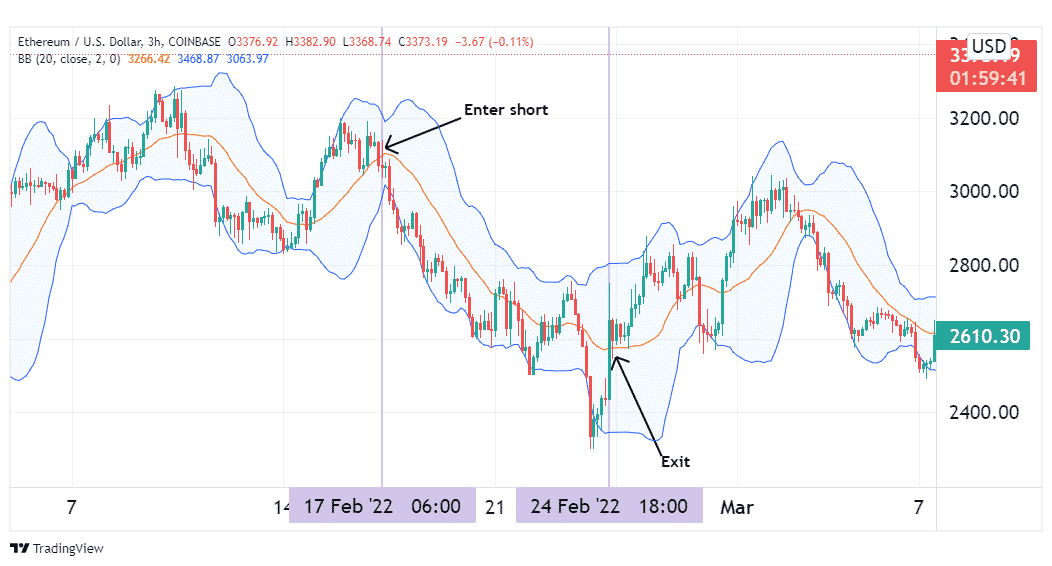
In the chart above, the signal to short ETH came on 17th Feb when its price crossed below the middle band. Though there were a few false exit signals, the actual exit manifested on 24th February when prices broke above the middle band to trade against the upper boundary.
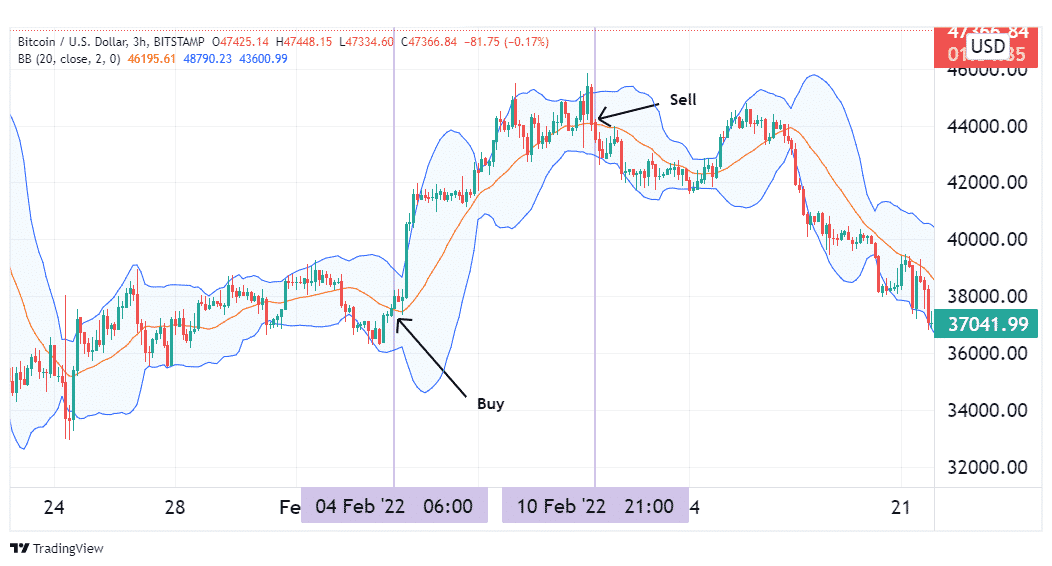
In a similar manner, above is the same approach highlighting a buy trade for Bitcoin.
The RSI method
The Relative Strength Index is a popular oscillator that is instrumental in identifying trend reversals. It is contained on a separate window below the price chart, with a vertical scale from 0 to 100. Any reading above 70 indicates that the cryptocurrency in question is overbought and is likely to embark on a downtrend. A reading below 30 indicates the opposite – that the coin is oversold and will likely rally.
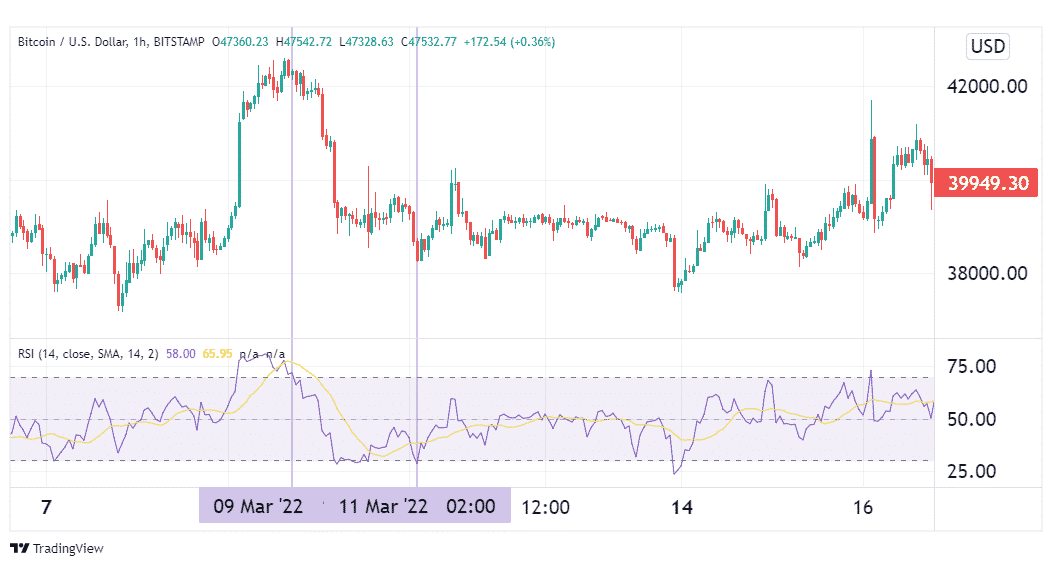
In the image above, Bitcoin was overbought on 9th March, after having undergone a quick rally. This meant that it was setting up for a decline, which it did, eventually negating all the gains from its prior rally. This was the signal to go short. The exit came on 11th March, when RSI showed that the coin was oversold.
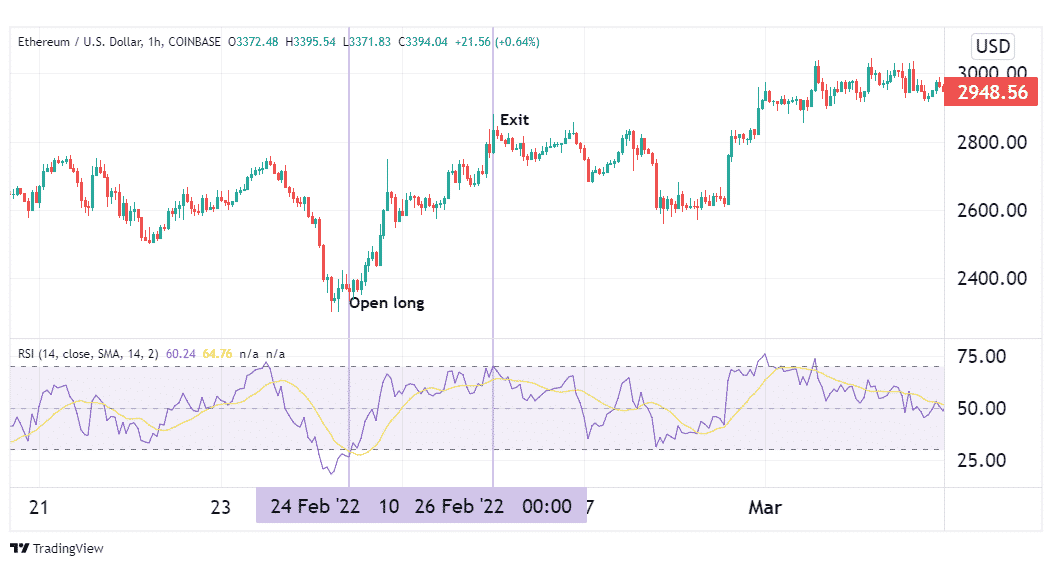
Similarly, the ETH chart below shows a buy signal when RSI reads oversold and an exit signal when it indicates that ETH is overbought.
Word to the wise
Any of the aforementioned strategies have the potential to yield profits from these two top cryptocurrencies. However, they all suffer from one major flaw – they are prone to false signals. To remedy this, it is always advisable to combine a few indicators on one chart for confirmation. This way, you only trade the best setups likely to yield a profit. You may also use other indicators not included in this article, such as the OBV, the ADX, and Moving Averages.
Conclusion
Bitcoin and Ethereum are the two top crypto coins by market cap. Bitcoin is popular as a means to store value, much like gold, except it is digital and intangible. ETH, on the other hand, is a utility coin that can be used to access decentralized applications. Despite their differences, both of these coins are poised to make exponential rallies over the coming years.
